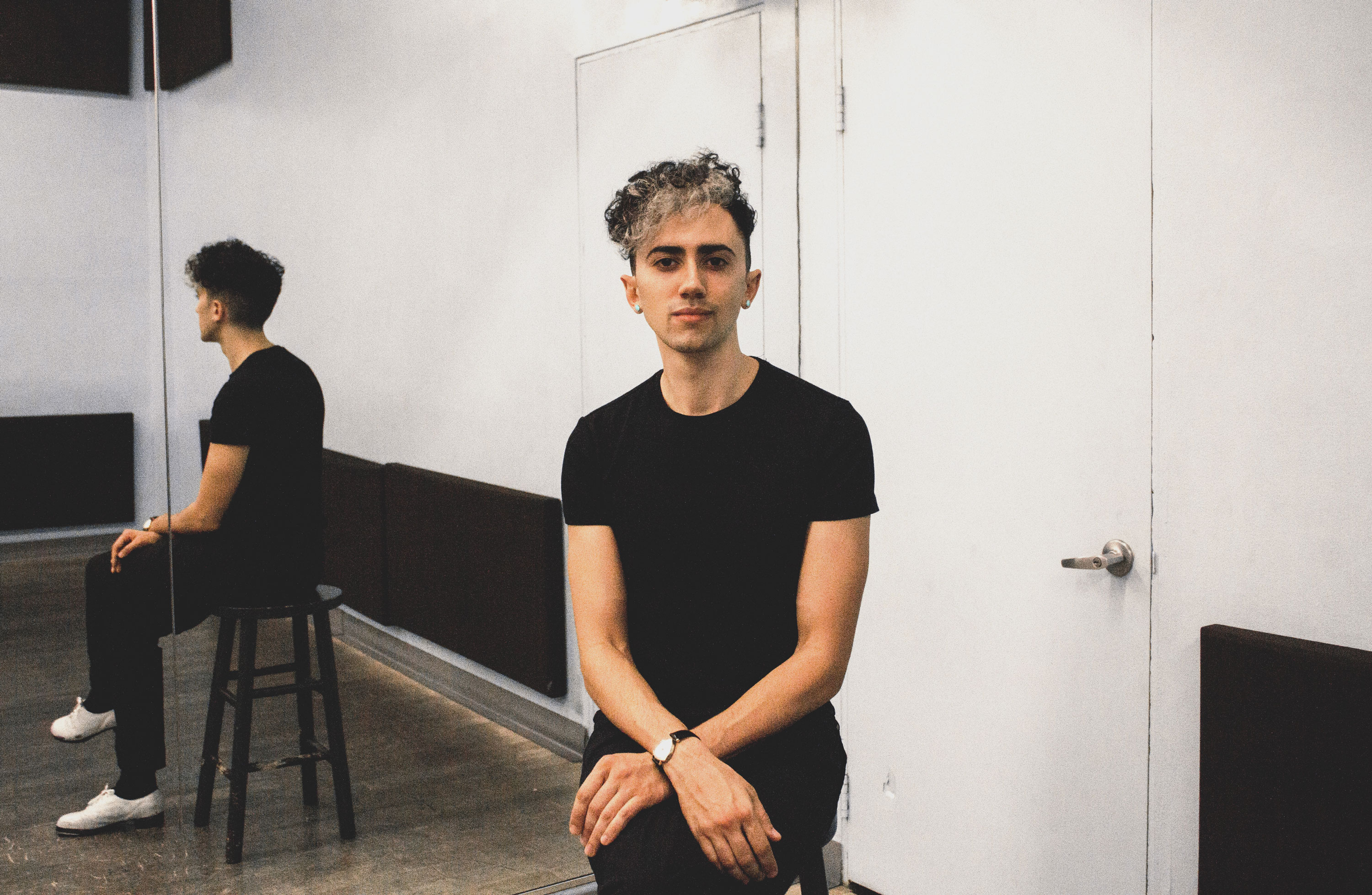
“When I was 10, I saw tap dance on TV and decided it was cool and that I’d like to try it,” says Caleb Teicher, now 25, a dance wunderkind, known for his fresh tap choreography and his subversive take on standards like the Lindy Hop.
After his 2011 Bessie Award for outstanding individual performance, Teicher’s rise has been streaked with career milestones and a sense of inevitable momentum. In November, he performed in a concert with indie icon Regina Spektor, his second collaboration with National Symphony Orchestra artistic advisor Ben Folds, at the Kennedy Center. In January, Teicher presents More Forever, consisting of three performances on a stage layered in sand, in collaboration with composer-pianist Conrad Tao that’s part of the Guggenheim’s Works & Process series at their Frank Lloyd Wright- designed black box theater.
More Forever affords Teicher a unique artistic opportunity. “I usually make things in the studio and then premiere them for an audience,” he explains. In this case, however, there have been three in- progress showings, enabling the incorporation of feedback throughout the process. Teicher describes sand dancing as a tap subgenre: instead of metal shoes on a wood floor, leather soles sweep across a surface of fine sand. “It’s less explored for the reason that sand is sort of troublesome,” he says. “People don’t want it in their theaters or near their instruments.” Usually, sand dancing is confined to a “little 4-by-4-foot square and enough room for one person to stand still and tap dance.” By contrast, the sandbox built for the Guggenheim’s stage is 20 by 20 feet, and “More Forever” features seven dancers (including Teicher) exploring Tao’s forward, contemporary score. “There’s piano and electronics,” he explains. “Conrad is having a moment as well.”
Teicher and I met after one of his rehearsals at the American Tap Dance Foundation in the West Village, a home base of sorts, where he spends nearly every day expanding his vernacular. On this afternoon, Caleb Teicher & Company—his collaborative troupe since 2015—is honing its Fall for Dance commission for the New York City Center. The piece blends sounds from beatboxer Chris Celiz and the traditional language of tap with a fresh touch of jazz freestyle to create the egalitarian practice that is a Teicher signature. An artist born for the stage, Teicher electrifies even the modest rehearsal space, his euphoria evident as he slides and stomps across the venue. Of his childhood, he recalls: “At one point, I remember saying I wanted to be in politics because I loved watching The West Wing so much.”
Fortunately, Teicher heeded the call of dance as his métier—and the dream of making it in New York City. He has the type of resumé that can make creative success seem all too easy. In reality, his meteoric rise reflects both the intrinsic dedication and luminous talent of an expressive master. Graduating high school after his junior year, he lucked into a life-changing entree to the dance world—as seems to happen when prodigious talent and copious risk-taking coalesce—with acclaimed tap dancer Michelle Dorrance during his first year in Manhattan in 2010. Five years later, Dorrance would go on to receive a MacArthur. “I didn’t have a job. I was kind of floating,” recalls Teicher. “And it just exploded. I won the Bessie at 17, and it’s something you are supposed to win decades down the line.”
Established more than three decades ago, the Guggenheim’s Works & Process is the first performing arts commission series set in a museum, and it includes dance, theater, music and opera. Its hallmark is the theater’s physical intimacy, which allows unique intellectual insight into a performer’s artistic process. “Works & Process started in order to see and meet artists,” says the program’s producer Caroline Cronson. “The theater is very clean and small and almost round, so you can have a performance and a moderated discussion. It is more than just performance. It is also explanatory.”
Works & Process is indeed a league of its own. It is where, in 2016, choreographer Ryan McNamara performed the site-specific Battleground, which he has described as a kind of sci-fi cosplay house-music- ballet-battle—“in some ways both the weirdest and most traditional piece he’s ever made.” Due to his explosive success, the Guggenheim presented an encore set of Battleground performances last winter. But Works & Process artists are more than revolutionary in their respective fields; they must also be eloquent. “Both Caleb and Conrad are deeply articulate. We need to have performers who can explain what they are doing and why they are doing it, educating the audience,” says Cronson.



